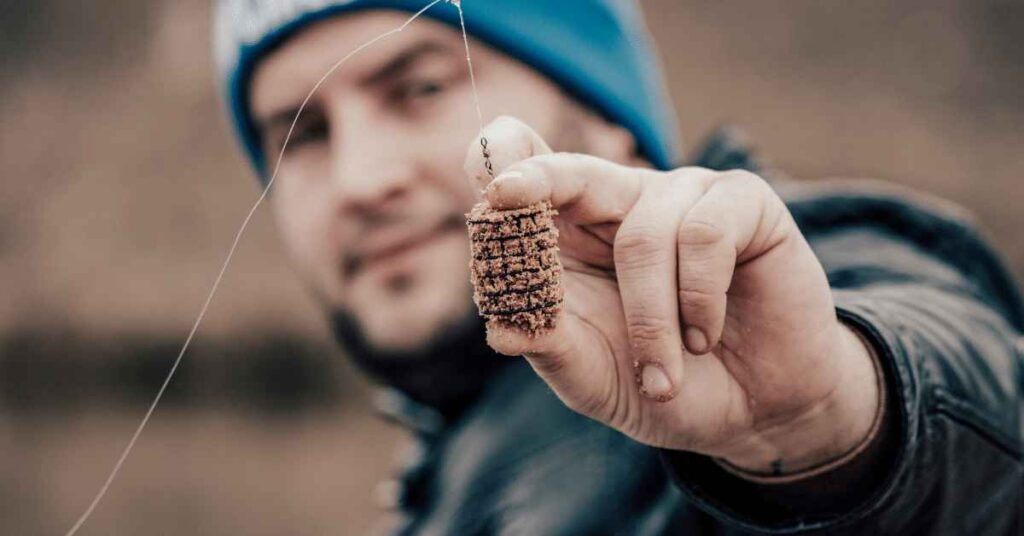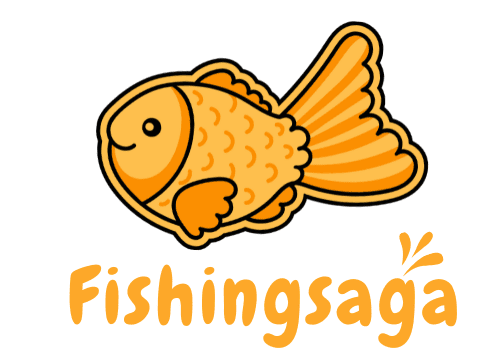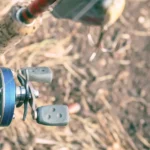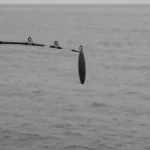Are you wondering how to put weight on a fishing line? Knowing how to add weight to your fishing line is essential whether you’re a seasoned fisherman trying to fine-tune your setup or a novice keen to learn the fundamentals. In this tutorial, we’ll show you how to put weight on a fishing line, ensuring that your bait sinks to the proper depth and increases your chances of landing that prized catch.
Understanding Different Types of Weights

Weights come in various shapes and sizes, each serving a unique purpose. Here are some common types of consequences you may encounter:
Split Shot
A split shot is a small, round weight that can easily clamp onto your line. They come in various sizes and can be added or removed as needed.
Egg Sinker
Egg sinkers are oval-shaped and designed to slide along the line. They work well in deeper waters and are particularly useful when fishing for bottom-dwelling species.
Bullet Weight
Bullet weights are cylindrical in shape and come in various sizes. They are commonly used when fishing in strong currents or casting long distances.
Bank Sinker
Bank sinkers are flat and come in various sizes. They are instrumental when fishing in rivers with strong currents.
Carolina Rig Weight
Carolina rig weights are bullet-shaped with a hole in the center. They are designed to slide freely along the line, providing the bait with natural movement.
Here’s How to Put Weight on a Fishing Line in (5 Steps)

Adding weight to your fishing line can help you get to the depth you want and keep your bait where you want it to stay while you fish. Several techniques exist for attaching various types of weight to a fishing line. The basic procedures are as follows:
Split Shot
Fragment Weights are small, round metal pieces that quickly adapt to your needs and preferences for fishing lines. Weighting a fishing line split shot:
Step 1: Prepare. Split shot weights fishing lines:
- Fishing line
- Split shot weights
- Pliers (optional)
Step 2: Select split shot weight. To maintain bait depth and depth, choose the right separated shot weight. Split shot weights should be smaller for lighter lines and minor tricks and more significant for heavier strings.
Step 3: Position the split shot weight on the line. Using your fingers or pliers, position the split shot weight on the line where you want it to be. You can slide it onto the bar or pin it onto the line with the pliers.
Step 4: Move the split shot weight. After placing the divided shot weight on the line, slide it up or down to the desired depth. The weight should be close enough to the hook to hold your bait but far enough away to deter fish.
Step 5: Use additional Split shot weights. Add split shot weights if needed.
Egg Sinker
Egg sinkers are oval-shaped weights that can be easily added or removed from your fishing line. Here’s how to put weight on a fishing line egg sinker:
Step 1: Collect the necessary tools and supplies. These are the things you’ll need to make an egg sinker and use it to add weight to your fishing line:
- Fishing line
- Egg sinker
- Pliers (optional)
Step 2: Select the suitable size egg sinker. Choosing the proper size egg sinker is crucial to achieving the desired depth and keeping your bait in place. Generally, use smaller egg sinkers for lighter lines and smaller lures and larger sinkers for heavier lines and larger lures.
Step 3: Thread the fishing line through the egg sinker. Using your fingers or pliers, thread the fishing line through the hole in the egg sinker.
Step 4: Tie a swivel to the fishing line (optional). Tie a swivel to the bar before adding the sinker to prevent the egg sinker from sliding down the fishing line. The swivel will act as a stopper, keeping the sinker in place.
Step 5: The fishing line needs a hook tied to it. After inserting the egg sinker, affix an angle to the bar so the weight holds the bait in place without interfering with the fish’s ability to bite.
Step 6: Move the egg sinker. After adding the egg sinker and hook, adjust its depth by sliding it up or down the line. The weight should be close enough to the theme to hold your bait but far enough away to deter fish.
Step 7: Toss in more egg-shaped weights if necessary. Adjust the placement of various egg sinkers to achieve the desired effect.
Bullet Weight
Your fishing line can have bullet weights, and cylindrically shaped consequences, added to or removed from it. How to Determine the Weight of a Fishing Line:
Step 1: Get your stuff together. To use a bullet weight to add weight to your fishing line, you’ll need the following:
- Fishing line
- Bullet weight
- Pliers (optional)
Step 2: Select the right size bullet weight. Choosing the right size bullet weight is crucial to achieving the desired depth and keeping your bait in place. Generally, use smaller bullet weights for lighter lines and smaller baits and larger weights for heavier lines and larger baits.
Step 3: Fishing line through bullet weight. Thread fishing line through bullet weight hole with fingers or pliers.
Step 4: Swivel the fishing line (optional). Before adding the bullet weight, tie a swivel to the bar. The swivel stops the importance.
Step 5: Tie a hook to the fishing line. After adding the bullet weight, tie an angle to the fishing line, making sure it’s positioned close enough to the importance of keeping your bait in place but far enough away that it won’t interfere with the fish biting.
Step 6: Adjust the position of the bullet weight. Once you’ve added the bullet weight and hook, adjust the role of the importance by sliding it up or down the line until it’s at the desired depth. The weight should be close enough to the hook to keep your bait in place but far enough away to prevent the fish from biting.
Step 7: Need more bullet weights? Add more bullet weights as needed.
Bank Sinker
Bank sinkers are rectangular-shaped weights that can be easily added or removed from your fishing line.
Step 1: Collect your supplies. To use a bank sinker to add weight to your fishing line, you will need the following materials:
- Fishing line
- Bank sinker
- Pliers (optional)
Step 2: Select the right size bank sinker. Choosing the right size bank sinker is crucial to achieving the desired depth and keeping your bait in place. Generally, use smaller sinkers for lighter lines and smaller lures and larger sinkers for heavier lines and larger baits.
Step 3: Thread the fishing line through the bank sinker. Using your fingers or pliers, thread the fishing line through the hole in the bank sinker.
Step 4: Tie a swivel to the fishing line (optional). Tie a swivel to the bar before adding the sinker to prevent the bank sinker from sliding down the fishing line. The swivel will act as a stopper, keeping the sinker in place.
Step 5: Tie a hook to the fishing line. After adding the bank sinker, tie an angle to the fishing line, ensuring it’s positioned close enough to the weight to keep your bait in place but far enough away that it won’t interfere with the fish biting.
Step 6: Adjust the position of the bank sinker. Once you’ve added the bank sinker and hook, adjust the work of the sinker by sliding it up or down the line until it’s at the desired depth. The weight should be close enough to the hook to keep your bait in place but far enough away to prevent the fish from biting.
Step 7: Add additional bank sinkers as needed. If you need weight, add extra bank sinkers similarly, adjusting their position as necessary.
Carolina Rig Weight
A Carolina rig consists of a bullet weight, a swivel, and a leader with a hook. The weight is placed above the swivel, which helps prevent the weight from sliding down the line.
Step 1: Collect your materials. You’ll need the following materials to add weight to your fishing line with a Carolina rig weight:
- Fishing line
- Carolina rig weight (bullet weight)
- Swivel
- Leader line
- Hook
- Pliers (optional)
Step 2: Thread fishing line through Carolina rig weight. Thread the fishing line through the Carolina rig weight hole with fingers or pliers.
Step 3: Attach the swivel. Attach the swivel above the Carolina rig weight to the fishing line.
Step 4: Attach the leader line to the other swivel. Attach the leader line to the swivel’s other end, ensuring it’s long enough for the fish.
Step 5: Attach the leader line hook. Tie the buckle to the leader line’s future close enough to the Carolina rig weight to hold your bait but far enough away not to interfere with the fish biting.
Step 6: Adjust Carolina rig weight. After adding the Carolina rig weight and hook, slide the weight up or down the line to the desired depth. The weight should be close enough to the pin to hold your bait but far enough away to deter fish.
Step 7: Add extra Carolina rig weights. Add Carolina rig weights as needed.
Mistakes People Usually Make
- Including extra mass that causes your bait to sink too rapidly.
- Not using the appropriate weight for the sea and weather conditions.
- The failure to routinely inspect your line for signs of wear and tear.
Where to Put Weights on Fishing Line
- Split Shot Weight: Weight your line immediately above your hook or bait with a split shot.
- Carolina Rig: Put a bullet weight on the end of your mainline, then a swivel, and finally, your hook or lure’s leader.
- Texas Rig: Put a bullet weight inside some soft plastic bait and hook it up.
- Drop Shot Rig: A weight should be attached to the end of the line, and the hook should be set above the weight.
- Slip Sinker Rigs: Attach a leader line with a hook or bait to the mainline using a barrel swivel and a slip sinker or egg sinker.
- Pegged Weight: Use a toothpick or a pegging technique to secure the weight near the bait.
- Inline Weight: Trolling or casting lures may have their depth adjusted by attaching inline weights in front of them. Try out several configurations until you find the one that best suits your fishing needs. where to put weights on fishing line strategy for your needs.
Is It Necessary to Use Fishing Weights on A Fishing Line?
Using fishing weights is only sometimes necessary, but it can be helpful in certain fishing situations. Fishing weights help sink the bait or lure to the desired depth and keep it in place. With consequences, your bait or lure may reach the desired depth or may drift too much with the current.
Various fishing weights are available, including split shots, egg sinkers, bullet weights, bank sinkers, and Carolina rig weights. Each weight has a specific purpose and can be used in different fishing situations. For example, split shots help add weight in small increments. In contrast, Carolina rig weights are great for fishing in deeper waters.
It’s important to note that adding too much weight to your fishing line can cause it to become unbalanced and affect your casting ability. Selecting the appropriate weight for the type of fish you’re targeting, and the depth of the water you’re fishing in is crucial. Experimenting with different weights and adjusting your setup accordingly can help you find the right balance and improve your chances of catching fish.
When and Where to Use Weights
The type of weight you use and how much you use will depend on the conditions you are fishing in. Here are some scenarios where weights are commonly used:
Fishing in Deep Water
When fishing in deep water, using enough weight to maintain the appropriate depth for your bait is essential. Egg sinkers or bullet weights work well in this scenario.
Fishing in Strong Currents
Using enough weight to keep your bait from drifting too far is essential when fishing in strong currents. Bank sinkers or bullet weights are helpful in this scenario.
Fishing with Live Bait
Using enough weight to keep the trick near the bottom is essential when fishing with live bait. Carolina rig weights are ideal for this scenario.
Fishing with Artificial Lures
Enough weight to achieve the desired casting distance is essential when fishing with artificial lures. Bullet weights are helpful in this scenario.
Tips for Successful Weight Placement
When doing so, bear the following things in mind placing weights on your line:
Start Light
Begin with a lower weight and gradually work up to the target weight. as needed.
Adjust Weight Placement
Adjust the weight placement until you find the sweet spot where the bait is at the desired depth.
Experiment with Different Types of Weights
Experiment with different types of weights to find the one that works best for your fishing conditions.
How To Remove Weight from The Line?
The right tools and techniques can remove weight from a fishing line easily.
Step 1: Determine the weight of your fishing line. The first step to removing weight from your fishing line is to determine the type of weight you’re using. Different kinds of consequences, such as split shots, egg sinkers, bullet weights, bank sinkers, and Carolina rig weights, may require additional tools or techniques for removal.
Step 2: Use pliers to remove the weight. Pliers are a helpful tool that can be used to remove them from your fishing line for most types of consequences. Grip the weight with the pliers and twist it off of the line. Be careful not to damage your fishing rig’s cable or other components.
Step 3: Use a knot-tying tool to remove the weight. Sometimes, the importance may be attached to the line with a knot that is difficult to untie. You can use a knot-tying tool to remove the weight in these situations. Insert the device between the knot and the weight, and twist to loosen the knot. Once the knot is loose, you can slide the weight off the line.
Step 4: Adjust your fishing rig as needed. After removing the weight from your fishing line, adjust your rig as required. You may need to add or remove additional weights to achieve the desired depth and keep your bait in place.
Frequently Asked Questions (FAQs)
What is the purpose of adding weight to a fishing line?
Adding weight to your bait makes it easier to throw and allows you to fish at a deeper depth.
Can I use household items as fishing weights in a pinch?
It’s technically feasible, but it’s not a good idea since common home products aren’t always fish-safe or good for the environment.
How do I know how much weight to add to my fishing line?
It’s important to experiment. The fishing circumstances will determine how much weight you should start with.
Can I reuse fishing weights, or should I replace them regularly?
If the fishing weights are still in excellent shape, you may use them again. But before each usage, check for any signs of damage.
Final Thought
it is crucial that every fisherman learns the art of affixing weight to a fishing line. You may increase your chances of catching fish on your next fishing trip by following the easy procedures indicated in this tutorial and ensuring your bait sinks properly. Remember the value of learning how to put weight on a fishing line the next time you’re out on the lake.











